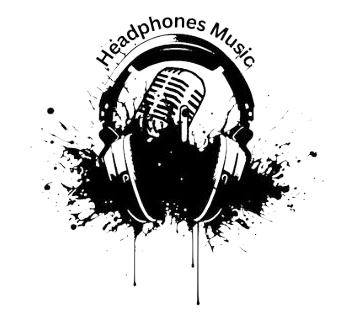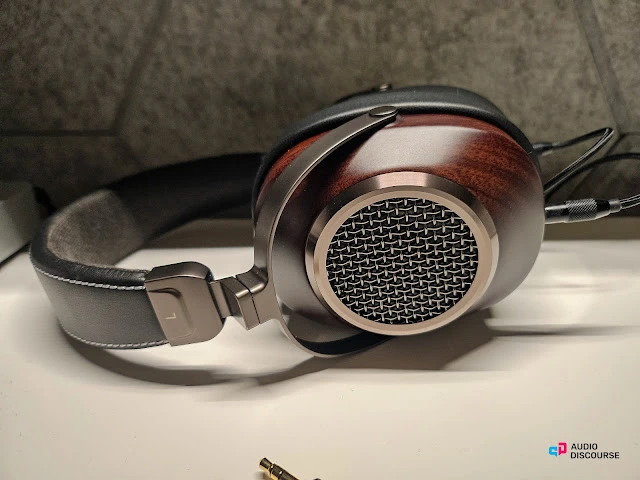Moondrop Blessing B3 Review: What Happened?

Moondrop Blessing B3 Review
To be honest, I really like Moondrop’s IEMs. I still think the Variations are my favorite ~$500 IEM, but I still adore the original Aria and Kato. I didn’t enjoy the Blessing 2 when it was released. I thought it sounded quite metallic and bright. I just decide not to evaluate it, regardless of whether there was a problem with tip selection at the time or something else. I was quite excited and eager to check out the B3 tinner nozzle with a Double DD design because the B2 and B2 Dusk had a sizable fan base. The B3 has four balanced armatures and a double dynamic driver. It costs $319.
I would like to express my gratitude to Shenzhenaudio for providing me with the Blessing 3 for review. The opportunity to test and evaluate products that are supplied to me by manufacturers or dealers is always appreciated, but it never has an impact on how highly I rank my reviews.
Looks and fit
The shell and the Moondrop Variations are nearly identical in size. The new, smaller nozzles are nice since they fit my particular inner ear shape comfortably and deeply. Because the IEMs are rather light, I don’t experience any non-sound-related weariness after extended use. The faceplate design and the shells both have a pleasing appearance. My unit already appears scratched up from little use, and I don’t like the mirror finish. I like color in my IEMs, therefore I appreciate the added blue hue, even though the double DD enclosure is blue and seems a little strange and out of place. However, I like the design as a whole.


Isolation and sound leakage
Despite the shells’ vented form, they effectively block out sound. Although it’s still not as good as some other vented IEMs, I believe it will block out the majority of noise in noisy settings. Everyone will be able to hear your music if you play it at higher volumes in a quiet place because the B3 does leak some sound from the vents.
Packaging and accessories
The B3 IEMs are located on the left side of the larger box that results from the packing being somewhat larger than what is required for the B3. The casing that contains the cables and tips is on the right side. Under that are warranty cards. You just receive one set of tips, so it feels like a rather barren unboxing experience. Although it has a different design, the case resembles the vintage grey case. Overall, the experience was subpar in comparison to Moondrop’s other offerings. Overall, I would have liked a smaller box.
Sound(overall)
The Eversolo DAC-Z8 attached to the SMSL SP400 was used for these last impressions. To my ears, the Blessing 3 sounded like these impressions. The Spinfit W1 tips were also used for this. Since the W1 offered the finest comfort and seal, I chose them. Depending on my particular equipment, things like DAC/amp selection and ear tip selection will yield varied impressions and results.
To my ears, the tune sounds brighter. In terms of slam and impact, the sub-bass performance isn’t horrible; at best, I would describe it as average. It misses the pleasant bass end decay that provides a wonderful rumble, but it does sound quite quick for a set of DD drivers. However, the mid bass is a little weak, which makes the bass seem to be lacking something in terms of overall weight. The instruments occasionally sound a little lean, but the mids are generally neutral. They do, however, sound authentic and include useful details. Although I think the B3 pulls in fine details and the vocals are decent, I do think the female vocals occasionally sound a little forced.
I find the high mids to be almost sibilant. It doesn’t improve the overall thin sound, but it’s still not horrible. The strange part is Treble. Despite its brightness, it doesn’t have a loud, metallic tone. Everything sounds crisp and detailed because the decay happens really quickly. The highlight here, in my opinion, is the top end treble. It handles resolution adequately, and I believe that when combined with its staging, it will wow some listeners. Overall, I don’t like this tune. Because it sounds thinner and leaner, the presentation is mediocre. Simply said, the sound seems to lack vitality due to the tuning.
The Fix????
So, how can this somewhat lifeless tune be fixed? Well, a re-tune was the first thing that came to mind. which, considering how well-liked the B2 Dusk was, may already be in the books. Making the sound tube or “guide” from the double DD enclosure larger or thicker would be my first idea for a solution.
They have the smallest sound tube connecting the nozzle to the driver enclosure, and they have gone to great lengths to create a tidy enclosure to hold two DD drivers. The poorest aspect of the tuning, in my opinion, was the bass, which would be produced by simply letting more sound exit the sound tube. However, I might be mistaken, and perhaps they intentionally had a purpose for making the sound tube narrow.


Soundstage/Imaging
The staging and imaging, in addition to the detail retrieval, are the B3’s additional highlights, in my opinion. While the depth and width of the staging are mediocre, the imagery is excellent, and features like left and right panning are excellent. Additionally, I am able to identify background instruments and little sounds that I often only hear on more expensive IEMs (about $1k). Considering the mediocre staging, I’m quite satisfied with the image.
Sensitivity/Drivability
The B3 will run smoothly off everything because it isn’t particularly difficult to drive. Depending on the source gear, it does appear to scale a bit more. However, I don’t believe it requires a lot of power. The 125mW Hiby R6 P2 DAP is giving me very strong single ended performance, and the 3W SMSL SP400 is giving me equally good performance. Additionally, it is not sensitive, so when I tried the B3 with a balanced connection, I had no noise problems.
Stock cable
The original B2 cable and the standard cable have a similar appearance. Like its Kato, I assumed they would utilize a somewhat thicker cable. Although it is comfortable and doesn’t pick up microphonics, the cable is thinner and has a shoddy feel and appearance. I believe this cable will work just fine, but if you’re not happy with the way it looks or feels, I would suggest getting a different one. In fact, I use the stock Kato cable on mine on a daily basis.

IEM comparisons
Letshuoer S12
The brighter tuning of the S12 and B3 is comparable. These days, the S12 costs almost half as much as the B3. Overall, the bass performance of the S12 is superior to that of the B3. Although the bass impact is almost the same, the S12 sounds a little more balanced because it has more mid bass. Both IEMs have roughly the same mids, but I think the S12’s vocals seem more realistic and detailed.
On both, the treble is almost the same brightness, and the upper mids are robust. While the B3 is more sophisticated and regulated, the S12 has a little louder sound. The B3 is superior for imaging and staging, as well as detail retrieval. That, in my opinion, is where the price difference is most noticeable. The B3 performs better technically than the S12, but I think the S12 is more tuned.

Dunu Vulkan
Although the tuning of the B3 and Vulkan is both leaner, I think the B3 sounds better overall than the Vulkan. Both lack good mid bass performance, however the bass strikes a little bit harder on the Vulkan. The B3 does a good job of maintaining a detailed and quick-sounding set of mids and vocals, while the Vulkan’s mids and vocals sound a little harsh. Both have a crisp upper mid, but I really dislike the Vulkan’s upper mids, and it’s more uncontrollable. The treble really brings out more details and sounds nicer on the B3. Although I am aware that some people like the Vulkan, I believe the B3 is a far superior choice.

Moondrop Variations
In addition to being older, the Variations cost more than the B3. With that $200 price hike, do the variations sound any better? Absolutely, if you can get the Variations to fit your ears! The B3 isn’t horrible, but when comparing A/B, the Variations make up for the B3’s overall lack of bass. A bit harsher than some people might prefer, though. Compared to the B3, the Variations have slightly more relaxed details but more natural mids. The B3’s artificial sound is absent from the Variations, and the vocals are far more detailed.
The B3 has sharper upper mids and treble, and it tends to draw in details similarly to the Variations, in my opinion. It will depend on personal preference because each have a somewhat distinct higher end tuning character. The Variations have a wider staging, but B3 performs better in imaging. Not by much, though. For good reason, The Variations remains one of my favorite IEMs. It sounds great without being a bass-heavy mushy IEM, and it’s incredibly well-tuned. The Variations are worth the additional $200 if you want a competitive, “fun”-sounding IEM rather than one that sounds lean.

Amping Combinations
Hiby R6 Pro II DAP
The more recent R6 P2 excels at bringing out the finest in most IEMs while being neutral and accurate. The B3’s performance was comparable to that of my desktop configuration. This demonstrates how skillfully they planned and executed their DAC/amp configuration on the R6 P2. This is also the reason I’m omitting auditory impressions from this. Given the system-wide EQ, I do believe that a device like the R6 P2 or even the Hiby R6 III performs well. I certainly believe that EQ would help the B3. Since I’m not interested in doing EQ work myself, I’ll allow the reviewers who are knowledgeable on appropriate EQ take care of that.

Eversolo DAC-Z8/SMSL SP400
My new desktop stack is being used for the first time in this review. Although the B3 did a great job on my desktop setup, as I indicated in my section on sound impressions, it did sound lean off of it. The B3 doesn’t seem to scale all that much, and I didn’t see a significant enough difference between the less expensive dongles and a desktop stack that costs about $1k. This will be excellent for people without the top source equipment.

Overall thoughts
Moondrop’s releases haven’t wowed me much since Kato and the Variations. This is unfortunate because the Variations are still one of my favorite IEMs. The B3 is sufficiently detailed, in my opinion, for most people to enjoy it, and it may be a strong contender for EQ. It’s not really accomplishing anything unusual or unique, in my opinion.
Additionally, I believe they made a huge mistake here and left a lot of tuning possibilities open with that twin DD configuration. The B3 could use some tweaking, in my opinion, and I suggest they work on utilizing the double DD arrangement more effectively for bass performance. In particular, I believe the B3 has the potential to be something exceptional with improved low-end performance.
So! Should I suggest the B3? Yes, if you enjoyed the B2 tuning. Yes, if you’re new to IEMs and want to have a positive first experience retrieving details. It’s unlikely if you dislike EQ and have some experience with IEMs. particularly if you dislike leaner-sounding or thin IEMs. This was definitely a “what happened?” moment for me. I’m really disappointed with this release because it was so close to being fantastic. Even though I haven’t liked any of the most recent Moondrop IEM releases, I am confident that Moondrop will produce some better (very subjective) products in the future. I appreciate you reading!






